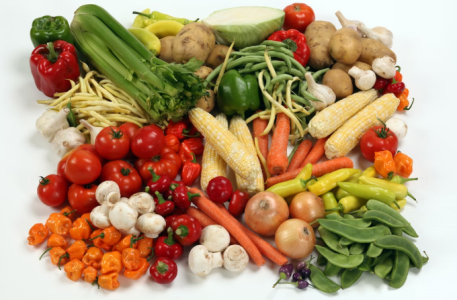Experts reveal the best cooking method to preserve vegetable nutrients
- Replies 0
Not all vegetables are created equal when it comes to the way they’re cooked—or not cooked at all. Depending on how you prep them, you might be losing out on essential nutrients without even realizing it.
For anyone trying to eat healthier, the difference between raw, steamed, roasted, or boiled could be more important than you think.
Experts say that technique matters, especially when it comes to preserving vitamins your body actually uses.
New research and expert advice show that steaming and microwaving are the most nutrient-friendly ways to cook vegetables.
These gentle methods help retain water-soluble vitamins like vitamin C and B vitamins, which are otherwise vulnerable to heat and liquid loss.
On the other hand, boiling, roasting, and frying tend to result in higher nutrient losses, especially when vegetables are cooked at high temperatures or for long periods.
Still, the goal isn’t perfection—it’s making informed choices that keep your meals both flavorful and nutritious.

Vegetables like lettuce, cucumbers, and bell peppers actually do best raw, according to registered dietitian Avery Zenker. “In general, raw vegetables have some of the highest nutrient content: antioxidants, polyphenols, B vitamins, and vitamin C,” she said.
Raw prep also tends to preserve texture and color, making them more appealing and snackable. For maximum benefit, eating the skins—like on cucumbers—can also increase your fiber intake.
Other vegetables hold up better to light cooking, which can enhance flavor without destroying important compounds.
Also read: Is raw milk making people sick in Florida? What you need to know before your next sip
For instance, broccoli, cauliflower, and Brussels sprouts are part of the cruciferous vegetable family that release more beneficial nutrients when chopped and steamed.
Zenker recommends chopping broccoli in advance to help release sulforaphane, a powerful antioxidant linked to reduced inflammation.
Carrots, green beans, and mushrooms are also ideal candidates for quick steaming or microwaving. Interestingly, some vegetables actually become more nutritious when cooked properly.
Also read: Study finds these 6 foods may help reduce risk of multiple cancers
Spinach is one standout example: raw, it’s full of oxalates that block iron and calcium absorption—but cooking breaks those down.
Tomatoes also fall into this category, as heating boosts lycopene, a powerful antioxidant tied to heart health.
Even the humble potato offers more digestible nutrition when cooked, especially if the skin is left on for extra fiber and antioxidants.
Read next: Kitchen killers? What these 10 kitchen items are doing to your health and safety!

So how should you prep your vegetables to get the most out of them—and does it really matter that much? Experts say variety is your best bet, both nutritionally and practically. Cooking methods like sautéing or roasting may sacrifice some nutrients but also make vegetables more enjoyable, which encourages people to eat them more often.
For anyone trying to eat healthier, the difference between raw, steamed, roasted, or boiled could be more important than you think.
Experts say that technique matters, especially when it comes to preserving vitamins your body actually uses.
New research and expert advice show that steaming and microwaving are the most nutrient-friendly ways to cook vegetables.
These gentle methods help retain water-soluble vitamins like vitamin C and B vitamins, which are otherwise vulnerable to heat and liquid loss.
On the other hand, boiling, roasting, and frying tend to result in higher nutrient losses, especially when vegetables are cooked at high temperatures or for long periods.
Still, the goal isn’t perfection—it’s making informed choices that keep your meals both flavorful and nutritious.

Experts reveal the best cooking method to preserve vegetable nutrients. Image source: Randy Fath / Unsplash
Vegetables like lettuce, cucumbers, and bell peppers actually do best raw, according to registered dietitian Avery Zenker. “In general, raw vegetables have some of the highest nutrient content: antioxidants, polyphenols, B vitamins, and vitamin C,” she said.
Raw prep also tends to preserve texture and color, making them more appealing and snackable. For maximum benefit, eating the skins—like on cucumbers—can also increase your fiber intake.
Other vegetables hold up better to light cooking, which can enhance flavor without destroying important compounds.
Also read: Is raw milk making people sick in Florida? What you need to know before your next sip
For instance, broccoli, cauliflower, and Brussels sprouts are part of the cruciferous vegetable family that release more beneficial nutrients when chopped and steamed.
Zenker recommends chopping broccoli in advance to help release sulforaphane, a powerful antioxidant linked to reduced inflammation.
Carrots, green beans, and mushrooms are also ideal candidates for quick steaming or microwaving. Interestingly, some vegetables actually become more nutritious when cooked properly.
Also read: Study finds these 6 foods may help reduce risk of multiple cancers
Spinach is one standout example: raw, it’s full of oxalates that block iron and calcium absorption—but cooking breaks those down.
Tomatoes also fall into this category, as heating boosts lycopene, a powerful antioxidant tied to heart health.
Even the humble potato offers more digestible nutrition when cooked, especially if the skin is left on for extra fiber and antioxidants.
Read next: Kitchen killers? What these 10 kitchen items are doing to your health and safety!
Key Takeaways
- Steaming and microwaving are the best cooking methods for preserving water-soluble nutrients.
- Some vegetables, like spinach and tomatoes, become more nutritious after being cooked due to better absorption of minerals and antioxidants.
- Raw vegetables like bell peppers and cucumbers retain the highest levels of certain vitamins and antioxidants.
- Mixing up your cooking methods can help you eat more vegetables overall, which is the ultimate nutritional win.






